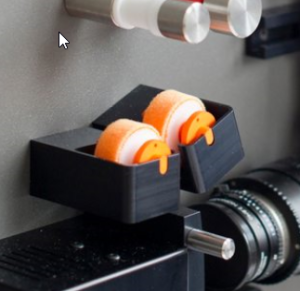Digitize Cinefilm
Technique of cinefilm conversion
UwVideoDigitaal uses the Müller HM73 Photo framescanner for cinefilm conversion.
The Müller HM73 Photo framescanner turns every frame (image) during the cinefilm conversion into a photo with high resolution. With the Müller HM73 Photo framescanner, a camera on the outside scans the film directly on the emulsion side, without using mirrors or a prism. See how it works without any loss of quality.
Scanning cinefilm or projection of the cinefilm? In short the differences: When we scan the film frame by frame and save the data digitally, we can speak of scanning. When we record a film that is projected with a video camera, we speak of projection.
Cinefilm scanning
The image information is written as .BMP (uncompressed image) and each image is at full resolution. From all these photos a movie is recomposed and an uncompressed AVI video file is created. This creates a perfect digital copy of the original and thus the best result for digital archiving. The number of frames per second 16, 18 or 24 of the original film are also realized here in the digital copy. In this way any movie can be digitized. Even for full-HD, these files are more than sufficient.
Cinefilm projection
Projection: Here an ordinary video camera is used. This camera converts the projected film directly into a PAL format at a speed of 25 frames per second, regardless of whether the film is made at 16, 18 or 24 frames per second.
Wetgate Scanning
Scratches (cables) and crackle are damages that can occur with films. Cables are often caused by the movies playing in dirty projectors. Projectors with automatic film loading can also cause this damage. Crackle consists of small hairline cracks. These are often caused by the shrinkage of the emulsion in relation to the support of the film. These are permanent damages and to reduce these effects during digitization Wetgate scanning has been developed.

This is frequently used in the professional digitization of films, but is a costly affair. The Müller HM 73 Photo frame scanner has its own system where the film is easily scanned by means of a Wetgate. Wetgate scanning makes the film more transparent and provides better detailing. See our price rates.
The following 8mm cinefilm examples from 1985 show the superior quality of the scanning technique we use with the Müller HM73 Photo framescanner. See also Cinefilm conversion UwFilmDigitaal.
